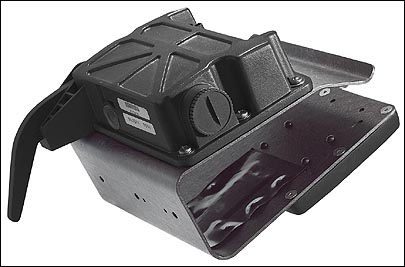Savi Networks’ first paying customer for its RFID-enabled global container shipment-tracking service, SaviTrak, is shipping logistics company Mitsui USA, the New York-based subsidiary of Japan’s Mitsui & Co. Mitsui USA will use the service as part of an ongoing two-month contract to track containers from China to the United States.
The project aims to help Mitsui and one of its customers, a Japanese maker of consumer packaged goods (CPGs), to determine the financial benefits of using the system to track shipments. “We have tracked thousands of shipping containers using our technology, but each customer has to establish the business case for themselves,” says Lani Fritts, chief operating officer at Savi Networks, a joint venture of RFID systems provider Savi Technology and seaport operator Hutchison Port Holdings (HPH).
The trial project began four weeks ago. Cases of consumer goods are being tagged with Symbol Technologies‘ passive UHF EPC RFID labels at a factory in Guangdong, China; the company wouldn’t say if the labels were read-only (EPC Class 0) or read-write (EPC Class 0+). Those labels will be used to create a container manifest as the cases are placed into a shipping container fitted with Savi Technology’s Savi Tag ST-676 ISO Container Security Tag, a battery-powered (active) 433 MHz RFID tag that clamps onto the cargo container’s door. The container’s tag number will be associated with the shipping manifest in SaviTrak’s database.
The container will then be trucked to the Port of Yantian and placed on a cargo ship. From there, it will be shipped to the Port of Long Beach, Calif., and finally transported to a distribution center (DC) in the same state. The container tag will be interrogated at a number of locations, including the manufacturing plant, the ports and the DC.
Because the system associates the unique ID numbers of passive case tags with the ID numbers of the container tags. Mitsui and its customer will be able to track the contents of each container, as they will know which tagged case is in which tracked container—a feature Savi terms “nested visibility.”
The Savi Tag ST-676 includes temperature, shock and humidity sensors that measure the environmental conditions to which cargo is exposed in transit. If a container is opened during travel, the tag creates an alert that can be read by a handheld or fixed-position RFID interrogator. Given the nested visibility for each case, the SaviTrak’s network of RFID interrogators—which tracks the container, its security status and the interior conditions—also provides details for each case as the Savi tags are interrogated at ports and other key locations.
For the manufacturer, the point of the trial is to test the value of tagging shipments early in the supply chain—at the site where the goods are manufactured—rather than at the manufacturer’s distribution center, just before delivery to a retailer’s DC.

By adding tags to products earlier in the supply chain, CPG manufacturers and other companies should be able to use the tags to help improve visibility in their own supply chain. The Japanese CPG manufacturer involved in this trial is currently shipping goods to Wal-Mart, as well as to other retailers in the United States. Mitsui explains that using real-time, RFID-generated data on the location and condition of containers will help provide its customers with greater visibility into the location of shipments. That, in turn, is expected to help Mitsui’s customers improve the security assurance of their shipments, which could help expedite processing by U.S. Customs. The better visibility should also help these companies reduce inventory and cut transportation and labor costs by decreasing the need for safety stock to cover for unanticipated shipping delays.
The SaviTrak container tracking service is charged per container trip. During the two-month contract, Savi Networks expects to track dozens of containers en route to the United States.
Savi Technology and HPH founded Savi Networks in August (see Savi, HPH Form Joint Venture). The joint venture is deploying infrastructure consisting of RFID readers at participating ports and a global network for distributing and sharing RFID-collected data.
Last month, Mitsui USA conducted a trial that tested the performance of 50 Savi ST-676 tags (see Mitsui Completes Successful E-Seal Trial). The company’s employees attached the tags to empty cargo containers and had them tranported by ship from the Port of Los Angeles to the Port of Hong Kong.


